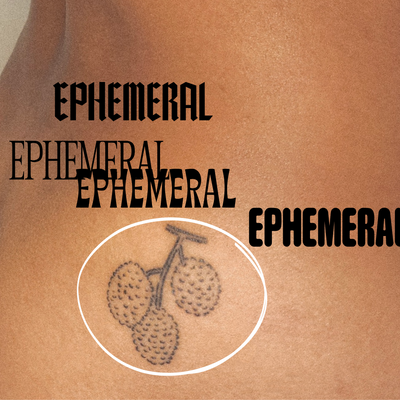If you reflect on 2020, you might recall an instance where a certain author, henceforth known to me as She Who Shall Not Be Named — criticized an article for using the phrase, “people who menstruate.”

Not all people who menstruate are women, and not all women menstruate. Having a vagina, having a period, and being a woman are not mutually exclusive terms. Womanhood is an incredibly nuanced experience and to define it simply by the possession of a period or vagina is exclusionary and out of line with society’s growing understanding of gender and identity.
After publishing an article about period care, we realized that the internet, in all its vastness, has no comprehensive source outlining all of the ways a woman can possibly not menstruate. So, we made it.
What is amenorrhea?
Simply put, amenorrhea means not getting a period. There are two main categories for amenorrhea: primary and secondary.
Secondary amenorrhea happens when someone who has already had a period in their lifetime misses one or more. The most common cause of secondary amenorrhea is pregnancy. The list of other potential causes is long, but some main reasons include breastfeeding, contraceptives, blockages to the uterus, cervix, or vagina, medications, low body weight, excessive exercise, and eating disorders.
Primary amenorrhea, however, occurs when a person reaches puberty and goes through the other normal physical changes (i.e., breasts, pubic hair, fat deposits at the hips) but does not get their period.
Below are the reasons a woman might never menstruate.
Polycystic ovary syndrome
According to the CDC, PCOS is the most common cause of female infertility. This common hormonal disorder is caused by an imbalance of reproductive hormones and can cause missed or irregular periods.
According to Dr. Fatima Daoud, “PCOS can result in anovulation, which can result in the absence of the hormonal fluctuations needed to cause menstruation.”
Symptoms typically develop around puberty and may include infrequent, irregular, or prolonged periods, excess androgen, or polycystic ovaries.
Mullerian Agenesis / MRKH syndrome
Agenesis is a big medical term that means the absence or incompletion of a body part or organ. Mullerian agenesis, or MRKH syndrome, or Mayer-Rokitansky-Kuster-Hauser syndrome, is the absence of the uterus and upper two-thirds of the vagina.
According to Dr. Allison Rodgers, OB/GYN at Fertility Centers of Illinois, people with MRKH are typically born with the labia and external genitals, but the opening of the vagina is blocked off with a septum or doesn’t fully develop. Dr. Daoud notes that it presents differently from person to person and doesn’t look the same from case to case.
Around 15% of primary amenorrhea cases are attributed to Mullerian Agenesis, says Dr. Daoud.
Turner Syndrome
Turner Syndrome (also known as Mysonomy X, Ullrich-Turner, Bonnevie-Ullrich-Turner, or gonadal dysgenesis (45XO)) is a chromosomal disorder in which someone assigned female at birth is born with only one X chromosome rather than two.
This causes streak ovaries, which are connective tissue potentially with some follicles. According to Dr. Daoud, the functional abilities of streak ovaries varies. While some people will have functional enough ovaries to lead to normal puberty and reproductive ability for a short time after, others will not produce enough hormone to go through puberty and menstruate at all, says Dr. Daoud.
Turner syndrome makes up around 43% of primary amenorrhea cases.
Swyer Syndrome
Swyer syndrome occurs when someone with XY chromosomes is born with a vagina, uterus, and fallopian tubes as a result of certain gene mutations. Despite having the Y chromosome associated with a male designation, people with Swyer Syndrome are often assigned female at birth.
According to Dr. Daoud, because testes don’t develop, people with Swyer Syndrome don’t have an opportunity to make the hormone MIH (Mullerian inhibiting substance), which stops female reproductive organs from developing in XY males. Without MIH, female reproductive organs will develop.
While they have a vagina, uterus, and the corresponding external genitalia typical of a genetic female, they have no ovaries and will not menstruate. Because ovaries don’t develop, people with Swyer Syndrome will not go through puberty without hormone replacement.
Hyperprolactinemia
Prolactin is a hormone responsible for lactation, the development of some breast tissue, and the production of milk. Hyperprolactinemia occurs when the levels of prolactin in the blood are higher than normal.
Among other symptoms, it can cause infertility, irregularity in or the absence of periods.
Congenital adrenal hyperplasia
CAH results from a genetic irregularity in which the body lacks the enzyme needed to produce hormones like cortisol, mineralocorticoids, and androgens like testosterone.
There are two main types of CAH: Classic and Nonclassic.
Classic CAH may cause ambiguous genitalia, infertility, and amenorrhea. Nonclassic CAH is more common than Classic CAH. While in Classic CAH, the enzyme is completely absent, in Nonclassic CAH, there is only a deficiency in the enzyme. Because of that, its effects are not as severe.
According to Mayo Clinic, with Nonclassic CAH, a cis woman may have "normal-appearing" genitalia at birth but experience irregular menstruation or amenorrhea later in life.
Menopause
Stacy London (of What Not to Wear fame) once said, “We think that the end of fertility is sort of the ultimate infertility.” Because we live in a society and culture that fears aging, menopause faces shame, despite it being completely natural.
On average, menopause happens around 51 years of age, according to Dr. Rodgers. During menopause, the uterine egg supply drops to the point at which they no longer get menstrual cycles. This then causes hormonal and metabolic changes.
Intersex
According to Planned Parenthood, intersex is a term (which replaced the inaccurate ‘hermaphrodite’) that described many varying situations in which, “a person is born with reproductive or sexual anatomy that doesn’t fit the boxes of ‘female’ or ‘male.’”
In infancy, doctors always assign intersex individuals a legal sex and often perform (a medically unnecessary) surgery on infants and children to make their bodies fit within binary norms. As is the case with all people, having been assigned as one sex doesn’t mean that is what their gender identity will reflect in the future.
Trans women
While trans women don’t experience menstrual cramps or bleeding, because of hormone therapy, they may experience PMS or PMDD-like symptoms. This depends on the types of hormones being used. According to Dr. Allison Rodgers, if a trans woman stops her estrogen, she may experience emotional symptoms (like moodiness and irritability) or hot flashes.
Womanhood is a rich and complex experience. It’s time we stopped conflating womanhood with the ability to reproduce. We’re so much more.
READ MORE LIKE THIS











